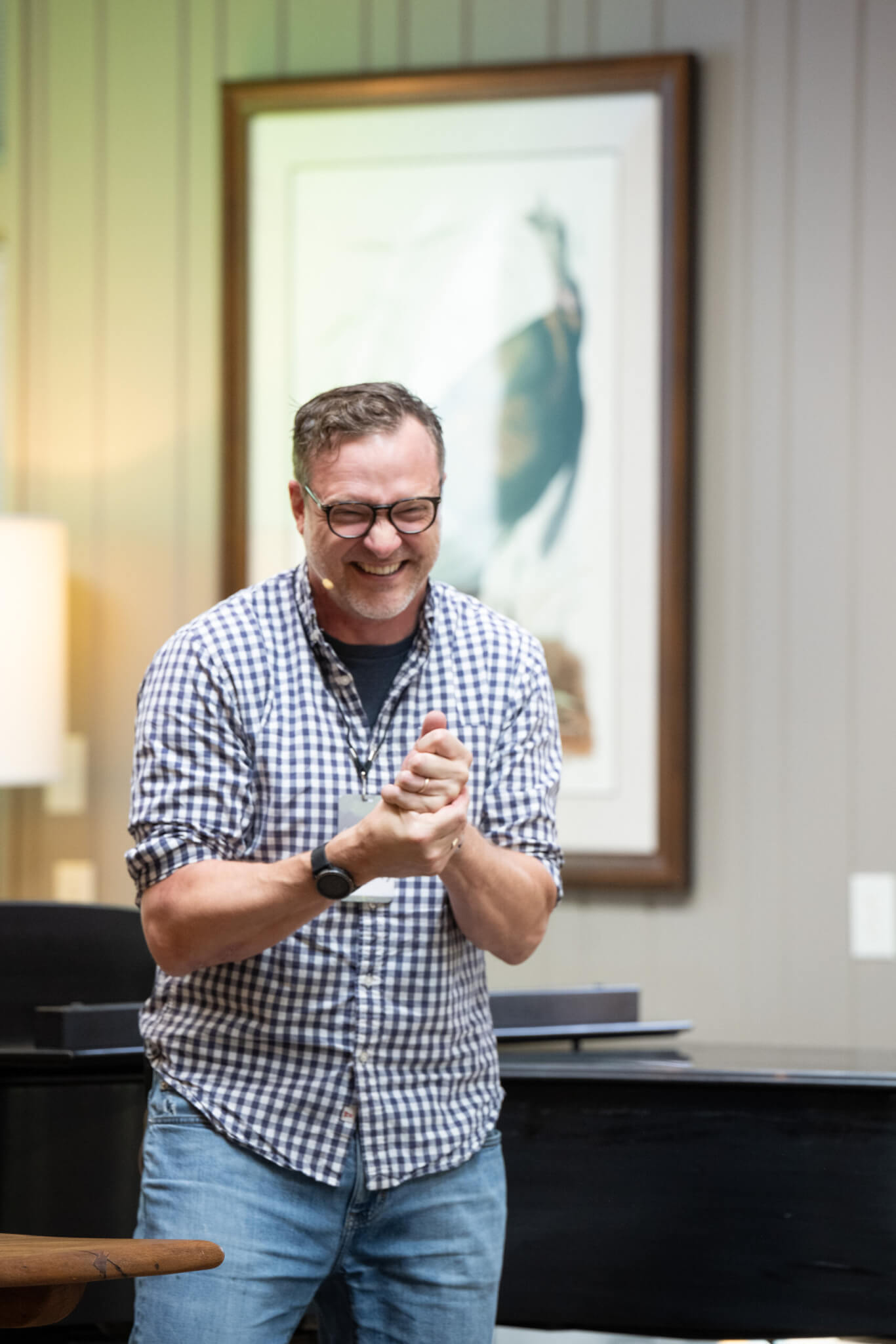

Last summer, I ate dinner with my family on the second-floor porch at Laity Lodge.
My wife, Sarah, and I have been to the Lodge numerous times, but this was the first time some of our kids had joined us. That July evening, the weather was surprisingly temperate, the food that Chef Ryan made was predictably delicious, the Frio was glittering green, and our family was actually enjoying each other’s company.
It was a moment of simple beauty and bone-deep goodness, and I felt whole. I felt connected to creation, to people I loved, and to the generous God who is the giver of all good gifts. It was a moment I won’t forget.
The H. E. Butt Foundation’s mission positions “wholeness” at its center:
We cultivate wholeness in people and institutions
for the transformation of communities.
What does it mean to “cultivate wholeness”? What even is “wholeness,” especially as seen through the lens of our Christian faith?
In the Reformed tradition of which I am a part, we sometimes speak of the Christian story in four-chapters: Creation, Fall, Redemption, Consummation. As a pastor, I’ve discovered that many modern American Christians focus on the middle two parts: Fall and Redemption. If that is how you understand the Christian message, the main problem in life is individual sin. The main solution is forgiveness and entry into eternal life.
This message is not wrong, but it is incomplete. Like arriving late to a movie and leaving early, it’s a story that’s missing the beginning and the end.
When we consider the gospel story as a plot with four chapters, new and beautiful themes emerge.




The story begins with a glorious Creation, with humanity positioned as God’s image bearers and representatives in the world. We see a picture of profound flourishing—what the Hebrew prophets called shalom. It is a picture in which everything in the created order, from the human body to vocational and ecological life, is deeply integrated and finally made whole. It is a picture of right relationships between humanity and God, fellow human beings, and creation itself.
When sin enters the world, the Fall is not just a problem of individual separation from God, but a comprehensive disintegration of the world’s wholeness. Everything that was meant to be together—God and humanity, male and female, the human body, the labor of our hands, the collective work of societies—is fragmented and pulls apart. We find ourselves living in a world in which sin is not only intensively present in the human heart but is also dispersed throughout what humans have created. Societies and economics. Systems and structures. Cities and institutions. Creation itself is broken by sin.
We find ourselves living in a world in which sin is not only intensively present in the human heart but is also dispersed throughout what humans have created.
Redemption is so much bigger than we sometimes imagine. Jesus Christ does indeed save sinners from death and judgment through his atoning death on the cross. But he also re-weaves the wholeness of our world. He feeds the hungry. He stands against oppressive leaders. He calms hurricanes. He heals broken bodies. In one astonishing story in Luke 8, Jesus delivers a man from evil, clothes his naked body, puts him in his right mind, and restores him to his family and community.
Finally, we see the end of the story through prophets like Isaiah and the apostle John. The Consummation is a remarkable picture of God’s intended finale. In the climax of history, we do not see disembodied souls floating away to be united with God in some super-spiritual state. Instead, we see the city of God descend and recreate the world. The curse is finally lifted, death is banished, tears are wiped away, and everything that is bent and broken is restored.
Unjust systems will finally be made right, and polluted oceans are finally made clean. Broken bodies will be made whole and abandoned children brought home and destroyed communities restored and hungry bellies fed and oppression ended and relationships healed. We see a day when God’s intended wholeness—the comprehensive flourishing of humanity and creation—is finally consummated.

The H. E. Butt Foundation embraces a gospel of wholeness, and this wholeness is comprehensive. It includes people and institutions and cities. It involves the salvation of the soul, the restoration of broken communities, and the care of creation.
This wholeness is connective. Recognizing that sin inherently pulls apart what God intended to be together, we seek to connect people and communities to God and to one another for a deeper integration of relationship.
Finally, this wholeness is Christ-centered. It comes from God in Christ and will ultimately be completed by the triune God alone. Through our work and labor, we bear witness to the wholeness that Christ has wrought, even as we receive it by grace. God alone is the author and finisher of this story.
When I’m in the Frio Canyon, I get a taste of that wholeness. Connected to God, others and creation, I experience in part the wholeness for which humanity was made.
This happens in beautiful moments at Laity Lodge. It happens at LLYC when a counselor helps campers experience their belovedness in Christ. It happens when the operations teams steward the sacred land through which the Frio runs. It is community engagement work in marginalized neighborhoods. It is the efforts to build bridges among divided neighbors.
All of this is the work of cultivating wholeness— the comprehensive flourishing that God through Christ is bringing to all creation.
If you plan a visit to the Canyon this year, or if you are involved in any of the Foundation’s work, even if that means just reading this issue of Echoes, receive this blessing: may you know the wholeness of God. May you experience deep connection with God, with others, and creation. May you participate with God’s Spirit in the cultivation of that wholeness in the world.
In the climax of history, we do not see disembodied souls floating away to be united with God in some super-spiritual state. Instead, we see the city of God descend and recreate the world. The curse is finally lifted, death is banished, tears are wiped away, and everything that is bent and broken is restored.
Corey Widmer is Lead Pastor at Third Church in Henrico, Virginia. He loves to cycle the roads and trails of Richmond, eat great food, and enjoy the James River. He met his wife Sarah at the University of Virginia. They have four wonderful girls.